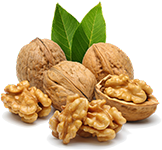In recent years, the cashew consumer market continues to expand, as the world's largest cashew supply, Africa's cashew industry has developed rapidly. A report released by a market analyst agency predicts that the African cashew market size is estimated at $820 million in 2024 and is expected to reach $980 million by 2029.
The natural environment of Africa is suitable for cashew growing, according to statistics, about 20 African countries grow cashew trees, and about 90% of the unshelled cashews traded in the global market are produced in these regions. Countries such as Cote d 'Ivoire, Tanzania, Nigeria, Benin, Guinea-Bissau, Mozambique and Ghana are large growers and exporters of cashews.
Cote d 'Ivoire is the largest cashew exporter in Africa and leads the market by a wide margin in cashew production. On the one hand, due to the short age of local cashew trees, generally cashew trees begin to bear fruit four to five years after planting, and their output tends to decline after 15 years. In Cote d 'Ivoire, most cashew trees are relatively young and productive, with more than 10 per cent of the planted area less than 10 years old. On the other hand, the Ivorian government attaches great importance to investing in the cashew industry, continuously expanding the planting area of fruit trees, selecting and breeding excellent varieties, and introducing preferential tax policies to support the construction of local value chains. In addition, investments from the World Bank and the International Monetary Fund have greatly promoted the development of the cashew industry in Cote d 'Ivoire. Thanks to these funds, cashew processing centers have been established in several cities, including Abidjan.
The complex processing process makes the cashew more valuable. The cashew hanging on the tree is not like what we see in the supermarket. In fact, the fruit of the cashew tree is made up of two parts: a large fleshy receptor and a nut that grows on the receptor. The cashew nut is wrapped in the hard shell of the lower nut. So processors first lay the nuts out in the sun, then use a pocket knife to pry the shells open. In some areas, machine shelling is replacing manual shelling, but the two key steps after shelling are still entirely manual: roasting to completely remove toxins, and removing the cashew skins, which contain tannins that irritate the esophagus. This step is highly skilled. How to peel the finished product directly determines the price, and the larger and more complete cashew nut prices are higher. In addition, cashew nuts can only be harvested once a year, can only be stored in a cool and dry environment, and the storage cost is high, which makes cashew prices often fluctuate within a year.
In Africa, due to the lack of cashew processing industry, cashew husking rate is less than 15%, most cashews without any processing at low prices directly exported to India and Vietnam and other countries. In the world, more than 80% of the shelled cashews are supplied by Asia, to the European and American markets, after careful baking and careful packaging of shelled cashews again appreciated. It is estimated that the export price of cashew nuts from India to the EU is about 3.5 times that of cashew farmers in Cote d 'Ivoire. After secondary processing in Europe, the price of cashews is about 2.5 times the Indian export price and about 8.5 times the Ivorian farm price.
The African cashew industry has a stable supply of high-quality raw materials, but in order to achieve more profits in the global market, we must base on the entire cashew value chain from production, processing to trade, and introduce appropriate industrial support policies as soon as possible, including ensuring that farmers have access to high-quality seedlings, technical knowledge and market information. Improving rural infrastructure, such as roads, to better connect cashew farms and processing plants; Strengthen the capacity of cashew processors to meet the quality standards of potential foreign markets.
In recent years, the Senegalese government has paid more attention to the development of the local cashew industry. In 2022, the National Strategy Implementation Committee of Senegal issued two documents, the Strategic Plan for the Revitalization of the Cashew Industry and the Manual for the Coordinated Development of the Cashew industry Chain, which outline the development of the cashew industry in Senegal and aim to improve cashew production, product quality and added value. Last year, Senegal hosted the 17th Annual African Cashew Conference, declaring that it would draw inspiration from Cote d 'Ivoire's cashew production model, hoping to close the yield gap with the latter through active learning and healthy competition. These measures have had some success, and the entire cashew nut industry is now growing rapidly in Senegal. According to local media reports, the Senegalese cashew nut industry Federation recently announced that in 2023, Senegal's cashew nut production reached 160,000 tons, worth about 95 billion West African francs (about 142.5 million euros), the production increased significantly from 87,000 tons in 2022, the main producing area is the southern Zijinsauer region. According to the statistics of the relevant departments of Senegal, the cashew nut industry has created about 100,000 jobs.

 010-63457516
010-63457516
 Favorites
Favorites
 010-63457516
010-63457516
 Favorites
Favorites